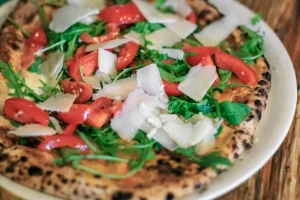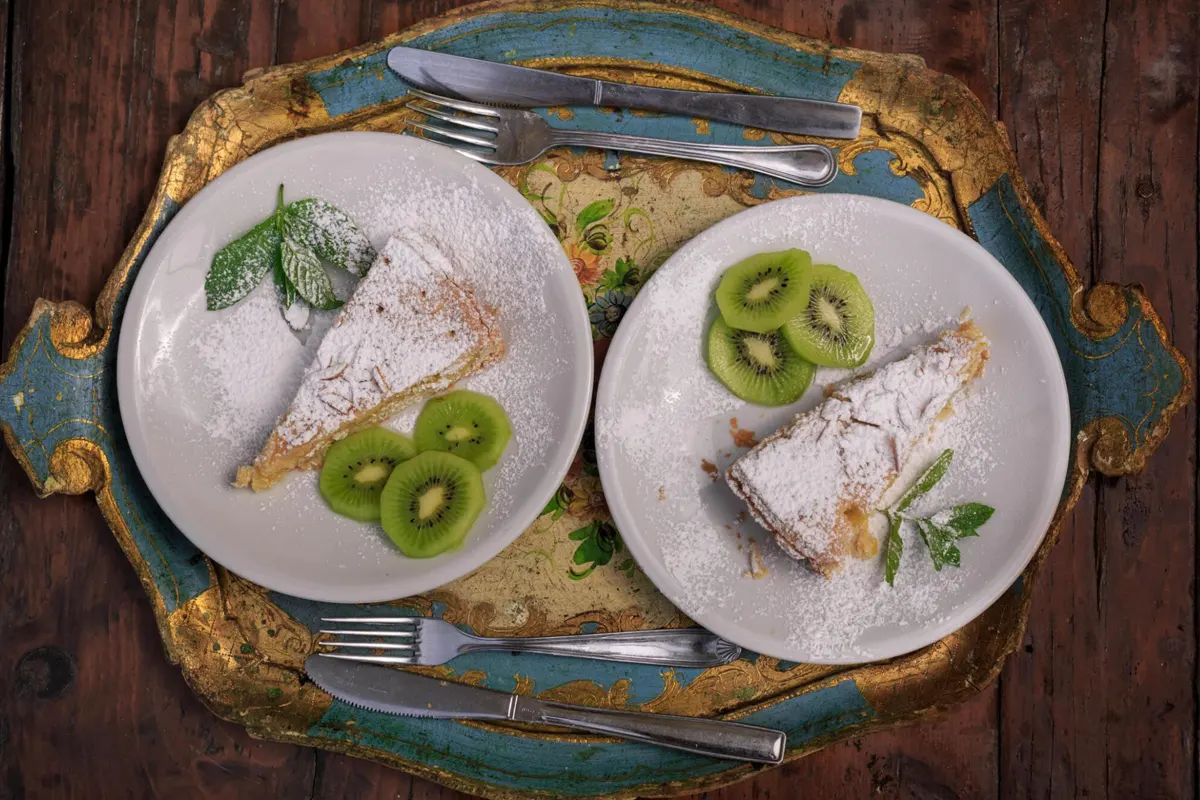Diving into the heart of Italian cuisine brings us to a term that’s as rich in history as it is in flavor: Florentine, a style that resonates with the FAO’s emphasis on the importance of traditional foods and sustainable agricultural practices (FAO response to global food security challenges). This culinary style, hailing from the enchanting city of Florence, is a testament to the simplicity and elegance of Italian cooking. In this comprehensive exploration, we’ll unravel the layers of Florentine cooking, from its spinach-infused foundations to the legendary figures who’ve shaped its legacy. Join us on this flavorful journey through time, techniques, and tantalizing dishes that embody the essence of Florence.
Introduction to Florentine Cooking
What does Florentine mean in cooking?
When we talk about something being Florentine in the culinary world, we’re essentially tipping our hats to Florence, Italy. This style of cooking, known for its graceful simplicity, intertwines the rich history of Florence with the wholesome goodness of fresh ingredients. But, oh, there’s a twist! When a dish is dubbed Florentine, you can bet your last penne that spinach will play a starring role.
The term à la Florentine, fancy as it sounds, is the culinary world’s way of saying, “Let’s make this dish with a generous helping of spinach.” Imagine a canvas of lush green, painted with the flavors of butter and a sprinkle of cheesy delight. This isn’t just food; it’s a piece of art, a homage to the green, leafy vegetable that has become synonymous with Florentine cuisine.
Now, you might be wondering, why spinach? Well, legend has it that Catherine de Medici, a Florence-born noblewoman who became the queen of France, was so enamored with spinach, she made it a staple in the French royal kitchen. Whether it was her love for spinach or a serendipitous abundance of the leafy greens in France, we may never know. But one thing’s for sure, her culinary legacy lives on in every Florentine dish that graces our tables, including modern adaptations like Chicken Florentine Soup.
From the creamy layers of Eggs Florentine to the buttery goodness of spinach simmered to perfection, Florentine cooking is a celebration of flavors, traditions, and the timeless allure of Italian cuisine. So, as we embark on this flavorful expedition, let’s pay homage to the city of Florence, to Catherine de Medici, and to the humble spinach, for giving us a taste of culinary history, one Florentine dish at a time.

Key Ingredients and Techniques
In the world of Florentine cuisine, a few key players take the stage, each bringing its unique flavor and texture to create dishes that are nothing short of a culinary symphony. Let’s dive into the heart of these ingredients and techniques that define the essence of cooking à la Florentine.
The Role of Spinach
Ah, spinach! This leafy green is not just Popeye’s power-up but the cornerstone of Florentine cooking. It’s not merely about throwing some greens on a plate; it’s about embracing spinach in its full glory. Traditionally, spinach in Florentine dishes is gently simmered in a loving embrace of butter until it becomes a tender bed for the main act, be it eggs, fish, or poultry. The transformation of the spinach, from a raw, crisp leaf to a soft, butter-infused delight, is a testament to the simple yet sophisticated nature of Florentine cuisine.
But wait, there’s more! The modern kitchen has seen the evolution of this technique, adapting it to suit contemporary tastes and dietary needs. Yet, the essence remains the same – spinach, with its earthy undertones and vibrant color, remains the heart and soul of Florentine dishes.
Mornay Sauce and Cheese
No Florentine dish is complete without the crowning glory of Mornay sauce and a sprinkle of grated cheese. Mornay sauce, a béchamel sauce enriched with cheese, adds a creamy, luxurious texture that pairs beautifully with the tender spinach. The cheese used is often Parmesan or Gruyère, bringing a nutty, savory depth that elevates the dish to new heights.
But here’s where the magic happens – the au gratin finish. This technique involves sprinkling the dish with additional cheese and breadcrumbs, then broiling it until it’s golden and crispy. It’s this contrast of textures, the creamy sauce against the crisp, golden topping, that makes Florentine dishes a dance of flavors and sensations on the palate.
Through these ingredients and techniques, Florentine cooking showcases the elegance of simplicity. It’s a reminder that sometimes, the most memorable dishes are born from the humblest of ingredients, transformed through love, skill, and a touch of culinary magic. So, next time you savor a Florentine dish, remember the artistry and history woven into every bite, a tribute to the timeless beauty of Florence and its culinary heritage.
Classic Florentine Dishes
The essence of Florentine cuisine shines through its classic dishes, where simplicity meets sophistication, and every bite tells a story of Florence’s rich culinary heritage. Among the myriad of recipes that carry the Florentine banner, a few stand out for their authenticity, flavor, and the way they’ve been embraced by food enthusiasts around the globe.
Eggs Florentine: A Breakfast Delight
Eggs Florentine is more than just a breakfast dish; it’s a morning ritual for many, a delightful start to the day that combines the richness of poached eggs with the freshness of spinach. Sitting atop a toasted English muffin, each element of this dish is a testament to the Florentine love affair with spinach. But here’s where it gets interesting—the traditional hollandaise sauce often takes a backseat, giving way to the creamier, cheesier Mornay sauce, adding a layer of complexity and depth to the dish.
Yet, in many a modern café and brunch spot, hollandaise makes a comeback, creating a fusion that’s both comforting and familiar. The contrast of the creamy sauce with the slightly crisp muffin and the tender, buttery spinach creates a symphony of textures and flavors that’s hard to resist. Eggs Florentine isn’t just food; it’s a narrative of culinary evolution, a blend of tradition and contemporary tastes.
A Symphony of Seafood and Poultry
The versatility of Florentine cooking extends beyond breakfast, weaving its magic into seafood and poultry dishes that are both hearty and elegant. Chicken Florentine, for instance, transforms the humble chicken breast into a masterpiece. Bathed in a creamy sauce, enriched with spinach, and seasoned with a hint of garlic and parmesan, this dish is a celebration of flavor and simplicity.
Seafood, too, finds a distinguished place in Florentine cuisine. Imagine a tender fillet of fish, nestled on a bed of buttery spinach, each bite infused with the delicate flavors of the sea, complemented by the earthiness of the greens. It’s a dish that speaks of the Mediterranean, of sunny days by the sea, and of the bounty that nature offers.
These dishes, with their deep roots in Florentine traditions, showcase the beauty of Italian cooking—where every ingredient has a purpose, every technique a reason, and every dish a story to tell. Whether it’s the simplicity of Eggs Florentine or the refined elegance of a seafood creation, Florentine dishes invite us to savor the richness of Italian cuisine, one delectable bite at a time.

Florentine Cooking Techniques
The charm of Florentine cuisine isn’t just in its ingredients but in the finesse and techniques that bring these dishes to life. The artistry of Florentine cooking lies in its ability to transform simple, everyday ingredients into culinary masterpieces, where technique plays as crucial a role as the ingredients themselves.
Cooking Spinach the Florentine Way
In the heart of Florentine cooking lies spinach, a leafy green that’s as versatile as it is nutritious. But it’s not just about adding spinach to a dish; it’s how you treat it that brings out its true Florentine spirit. The traditional method involves gently simmering the spinach in butter, a technique that elevates the humble vegetable to new heights of flavor. This isn’t about a quick sauté or a hasty blanch; it’s a slow, careful process that allows the spinach to absorb the rich, creamy goodness of the butter, transforming it into a soft, flavorful bed that’s perfect for everything from poached eggs to seared chicken.
But it’s not just about the butter. The magic of Florentine spinach lies in its seasoning. A pinch of salt, a whisper of garlic, and perhaps a grating of nutmeg are all it takes to turn this simple side into a standout feature of any Florentine dish. It’s a testament to the philosophy of Italian cooking—less is more, and quality trumps quantity every time.
Achieving the Au Gratin Finish
Another hallmark of Florentine cuisine is the au gratin finish, a technique that involves sprinkling a dish with cheese or breadcrumbs and then browning it to perfection. This isn’t just about adding a crunchy topping; it’s about creating a layer of texture and flavor that complements the creamy, buttery softness of the spinach and the richness of the Mornay sauce.
The key to a perfect au gratin finish lies in the broiler. Watching the dish closely as it bubbles and browns under the heat is crucial, for the line between perfectly golden and burnt is a fine one. The result? A crispy, cheesy crust that gives way to the tender, flavorful layers beneath, adding an irresistible contrast to the dish’s overall texture.
These techniques, from the buttery simmering of spinach to the golden crunch of an au gratin finish, are what set Florentine cooking apart. They’re a celebration of texture, flavor, and the joy of cooking, reminding us that sometimes, the simplest methods are the ones that yield the most extraordinary results.
The Cultural Impact of Florentine Cooking
The influence of Florentine cooking extends far beyond the boundaries of its city or even Italy itself, weaving a rich tapestry of history, culture, and culinary excellence that resonates around the world. It’s a style that not only showcases the depth of Italian culinary traditions but also tells the story of a region’s connection to its food, its land, and its past.
Catherine de Medici’s Culinary Legacy
At the heart of the Florentine culinary narrative is Catherine de Medici, a name synonymous with the spread of Italian cuisine across the borders of France and beyond. As a young bride leaving Florence for France, Catherine is often credited with introducing the sophisticated tastes and techniques of Italian cooking to the French court, including the beloved spinach that is central to Florentine dishes. Whether it was through her personal preference for spinach or the practicality of its abundance and versatility, Catherine’s influence on French cuisine is undeniable. Her story is a testament to the power of food in bridging cultures and shaping culinary traditions, making her not just a historical figure but a culinary icon whose legacy continues to inspire chefs and food enthusiasts worldwide.
The Global Footprint of Florentine Cuisine
Florentine cooking, with its emphasis on simplicity, quality ingredients, and heartfelt preparation, has left a lasting mark on the culinary world. Its principles resonate in the farm-to-table movements, the slow food crusades, and the countless chefs and home cooks who seek to capture the essence of Italian cooking. The spread of Florentine dishes across continents is a story of cultural exchange, of recipes passed down through generations, and of the universal language of good food bringing people together.
In modern kitchens, both professional and home, the principles of Florentine cooking — the careful selection of ingredients, the simple yet effective techniques, and the celebration of each component’s natural flavors — continue to influence cooking philosophies. The global footprint of Florentine cuisine is a mosaic of dishes inspired by the heart of Italy, adapted to local tastes and ingredients but always true to the spirit of simplicity and quality that defines Florentine cooking.

Frequently Asked Questions
As we delve deeper into the world of Florentine cooking, it’s only natural that a few questions bubble to the surface. Let’s address some of the most common queries that enthusiasts and curious minds often ponder about this beloved culinary style.
Is Florentine Cooking Strictly Vegetarian?
When one thinks of Florentine cuisine, the lush, green spinach immediately comes to mind. However, this doesn’t mean that all Florentine dishes are vegetarian. While spinach plays a starring role, it often shares the stage with proteins like eggs, chicken, or fish. The beauty of Florentine cooking lies in its versatility and its ability to embrace a variety of ingredients, making it a delightful exploration for both vegetarians and non-vegetarians alike.
Can Florentine Dishes Be Made Without Cheese or Dairy?
At first glance, the rich, creamy textures of Florentine dishes might seem inseparable from dairy. But don’t let that deter you! The world of cooking is all about adaptation and innovation. For those who prefer to avoid dairy, there are plenty of alternatives that can mimic the creaminess and depth of flavor that cheese and butter provide. Nutritional yeast, plant-based creams, and dairy-free cheeses are just a few options that can transform a traditional Florentine dish into a dairy-free delight, proving that Florentine cooking can be inclusive and accommodating to various dietary preferences.
What Are Some Common Misconceptions About Florentine Cuisine?
One might think that Florentine cuisine is all about elaborate, time-consuming dishes reserved for special occasions. In reality, the essence of Florentine cooking is its simplicity and the celebration of high-quality, fresh ingredients. It’s about bringing out the best in each component, whether it’s a humble spinach leaf or a fresh fillet of fish. Florentine dishes don’t need to be complicated to be delicious; they’re a testament to the fact that sometimes, the simplest meals are the most satisfying.
Florentine cuisine is a journey through taste, tradition, and the treasures of Italian cooking. Whether you’re a seasoned chef or a curious foodie, there’s always something new to discover and savor in the world of Florentine dishes. So, roll up your sleeves, grab a handful of fresh spinach, and let the magic of Florentine cooking unfold in your kitchen.

